Greece, Peloponnesos, Elis, Olympia Museum, Lapith women
From the west end of the Temple of Zeus, pedimental sculpture, 5th century BC. depicting the fight between the Lapiths and the Centaurs. Here, two Lapith women look on, originally confined by the corner of the pediment.
From the west end of the Temple of Zeus, pedimental sculpture, 5th century BC. depicting the fight between the Lapiths and the Centaurs. Here, two Lapith women look on, originally confined by the corner of the pediment.
Greece, Peloponnesos, Elis, Olympia Museum, Nike of Paionios
Even a fragmentary faceless reconstructed statue has a beauty. This is the statue of Victory (Nike) the work of Paionios of Mende in the Greek Chalkidike peninsula, c. 420 BC. The inscription on the pedestal also mentions that it was a votive offering made by the Messenians and the Naupaktians (from Naupaktos, also known as Lepanto).
Even a fragmentary faceless reconstructed statue has a beauty. This is the statue of Victory (Nike) the work of Paionios of Mende in the Greek Chalkidike peninsula, c. 420 BC. The inscription on the pedestal also mentions that it was a votive offering made by the Messenians and the Naupaktians (from Naupaktos, also known as Lepanto).
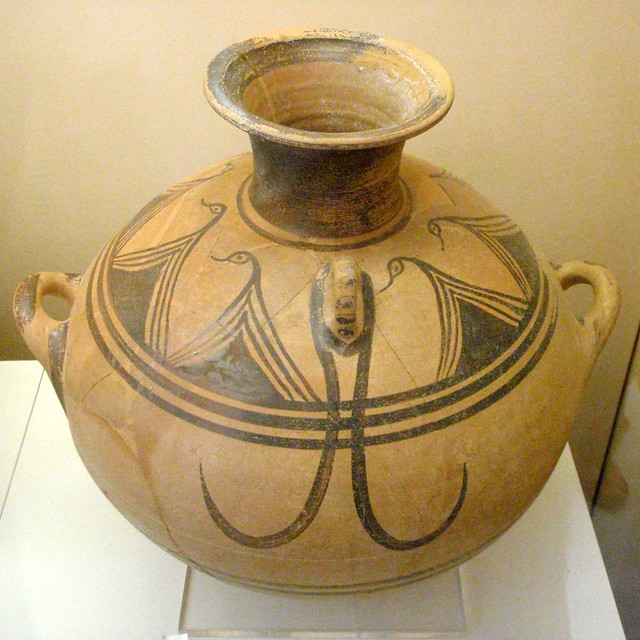
Four-handled amphora
Trypes (Olympia), Chamber Tomb A
LH IIIC Late
Olympia, Archaeological Museum inv. Π 561
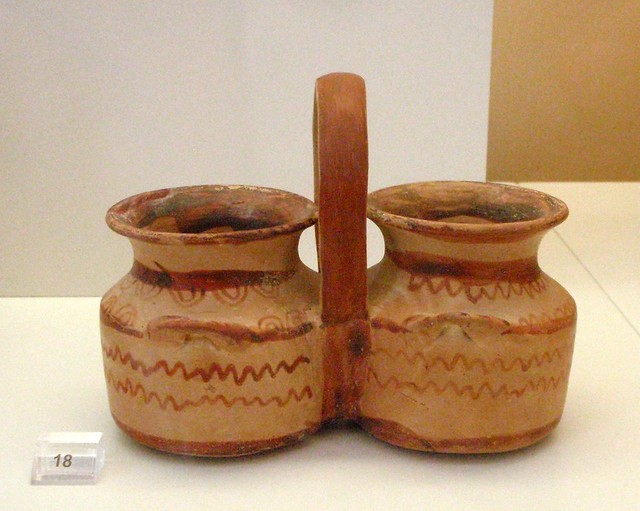
Kernos
Trypes, Olympia, Chamber Tomb E
LH IIIC Middle
Olympia, Archaeological Museum inv. Π 631
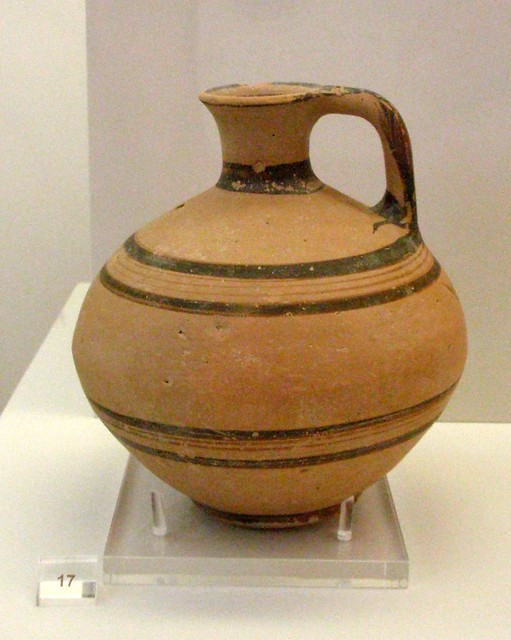
LH IIIC Jug from Olympia Jug
Olympia, Kladeos (chance find)
LH IIIC
Olympia, Archaeological Museum inv. Π 309

Four-handled amphoriskos
Trypes, Olympia, Chamber Tomb Δ
LH IIIC
Olympia, Archaeological Museum inv. Π 597

Tripod pyxis
Trypes, Olympia, Chamber tomb Δ
LH IIIC Late
Olympia, Archaeological Museum inv. Π 592
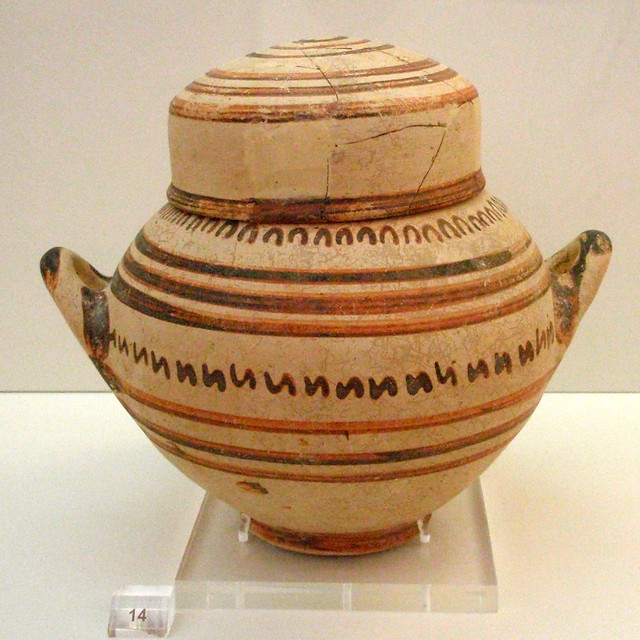
Lidded pitcher
Trypes, Olympia, destroyed chamber tomb
LH IIIC
Olympia, Archaeological Museum inv. Π 354

Stirrup jar
Trypes, Olympia, Chamber tomb A
LH IIIC
Olympia, Archaeological Museum inv. Π 563
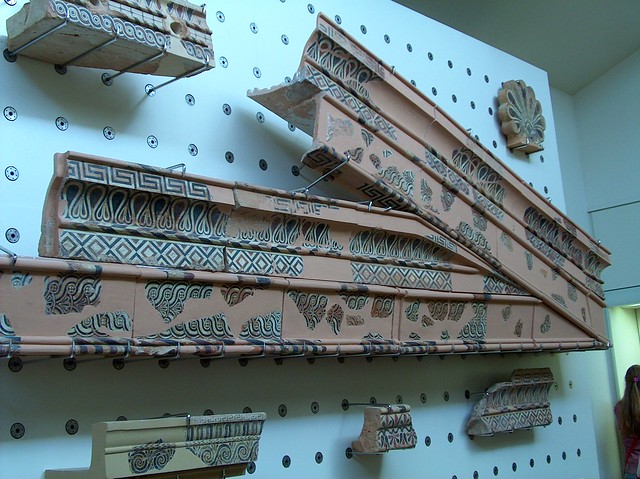

340-330 a.C
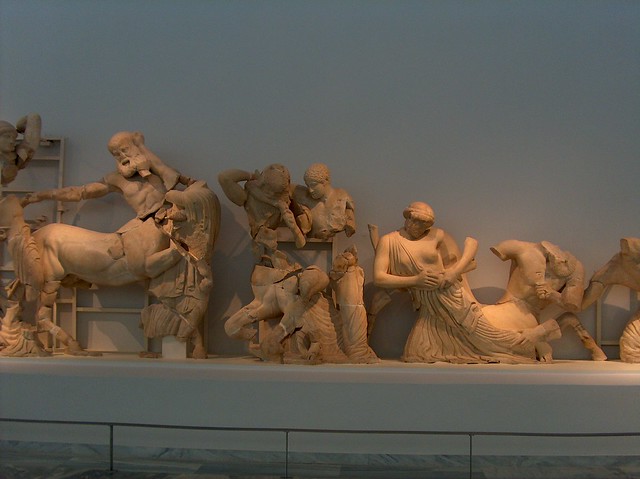



Ornaments Temple of Zeus

Olimpia: Museo Archeologico

olympia museum/western pediment
The sculptured ornaments from the Temple of Zeus.
There were 42 figures decorating the 2 pediments of the temple, 12 metopes and the lion-headed water spouts running along the lengths of the temple. It is one of the best surviving ensembles from ancient Greek works of art. They belong to the "austere style" and date to the 1st half of the 5th century B.C.
The eastern pediment depicts the chariot race between Pelops and Oinomaos, and the central figure which dominates the work is of Zeus. The western pediment depicts the abduction of the Lapith women by Centaurs, and has Apollo as its central figure. The metopes bear the relief representation of Hercules' labours. These sculptures were made during the 5th century B.C.
As you can see there are in much better shape thtan the ones from the Parthenon in Acropolis.
The sculptured ornaments from the Temple of Zeus.
There were 42 figures decorating the 2 pediments of the temple, 12 metopes and the lion-headed water spouts running along the lengths of the temple. It is one of the best surviving ensembles from ancient Greek works of art. They belong to the "austere style" and date to the 1st half of the 5th century B.C.
The eastern pediment depicts the chariot race between Pelops and Oinomaos, and the central figure which dominates the work is of Zeus. The western pediment depicts the abduction of the Lapith women by Centaurs, and has Apollo as its central figure. The metopes bear the relief representation of Hercules' labours. These sculptures were made during the 5th century B.C.
As you can see there are in much better shape thtan the ones from the Parthenon in Acropolis.
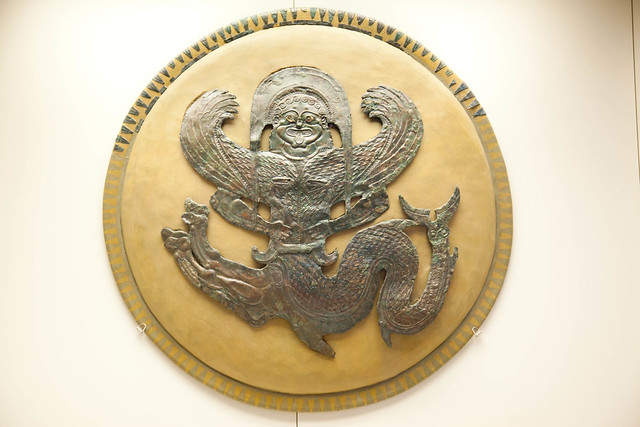
Shield

